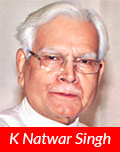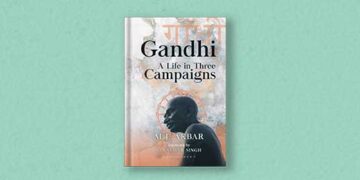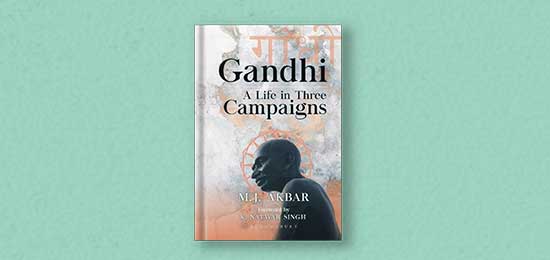 DURING his last campaign for freedom, commonly known as the Quit India Movement, Gandhiji mobilised at least forty million Indians, either by word of mouth with the help of Congress workers or through the existing media. This amounted to 10 per cent of the then population of the Indian subcontinent. Nothing comparable had happened in the world.
DURING his last campaign for freedom, commonly known as the Quit India Movement, Gandhiji mobilised at least forty million Indians, either by word of mouth with the help of Congress workers or through the existing media. This amounted to 10 per cent of the then population of the Indian subcontinent. Nothing comparable had happened in the world.
His message echoed through towns and villages, big and small, across India, in addition of course to large parts of the globe. The world was watching; it knew, instinctively, that what Gandhi did today the rest of the colonised world would do tomorrow. It should never be forgotten that Gandhiji’s freedom struggle was the first mass movement against European colonialism. It broke ground, it found a path, and although other colonial struggles could not, or did not, necessarily emulate Gandhiji’s methods, his success against the mightiest empire in history convinced Asia and Africa that the shackles of colonial rule were not unbreakable.
Gandhiji’s doctrine was novel, compelling, ethical and high-minded. He developed the terminology, strategy and tactics of a non-violent war that sometimes seemed unreal because it was unbelievable.
Satyagraha became a household word. He used religious metaphor brilliantly to penetrate seamlessly into the consciousness of the masses without ever making religion a divisive and dangerous ideology.
He turned the concept of harmony embedded in every faith into the springboard of Indian unity at a time used as the British, in connivance with partisan provocateurs, were determined to reinvent religion as political dynamite to splinter Indians along the fault lines of faith and instigate emotions that erupted in horrific bloodshed.
Since he spoke from the heart, Gandhi rarely read a speech; he spoke extempore with the passion of conviction. There was no question of uttering a false word for he rarely had a false thought. His faithful followers took down every word he uttered.
His speech in 1922 during his ‘great trial’ in Ahmedabad when the government accused Gandhi of sedition under Section 124A of the Indian Panel Code after he had withdrawn the non-cooperation movement following violence in Chauri Chaura, was historic.
About 200 people, including his beloved wife Kasturba, Pandit Madan Mohan Malviya, Sarojini Naidu and Jehangir Bomanji Petit, the nationalist, philanthropist, industrialist supporter of the Mahatma, gathered in the court. All present stood up, not only for the judge but also for the ‘frail, serene, indomitable figure in a coarse and scanty loin cloth’ when he entered the room. Gandhi was his own counsel as he had every right to be. In any case, he needed no defence. He did not argue against breach of any sedition law. He argued on much more sacrosanct ground: the age-old conflict between law and conscience.
‘I hold it to be a virtue to be disaffected towards a government which in its totality has done more harm to India than any previous system’, Gandhi said. What could be more glorious for a patriot than to be seditious against an illegitimate, colonial foreign rule? Since the panel code was designed to suppress the liberty of Indians, he pleaded guilty to every charge. He told Judge R.S. Broomfield to either resign and dissociate himself from ‘evil’ or pass the severest sentence. Broomfield moved, described Gandhi as a great patriot and a great leader in the eyes of millions of his countrymen and said he had no option under the law but to send the patriot to prison.






























